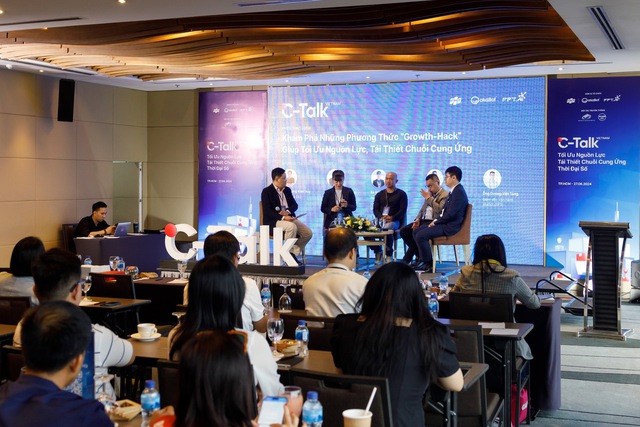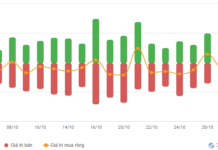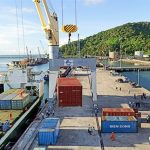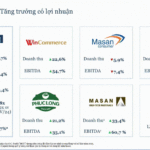Smart Automation Trends in Logistics and Supply Chain
In 2023-2034, the global supply chain is facing escalating pressures resulting in increased costs in logistics operations. According to Mr. Nguyen Tan Hung, Director of AI Business in the South, FPT Smart Cloud, at the C-Talk Supply Chain event held on June 27, geopolitical changes such as the Covid-19 pandemic, the Russia-Ukraine war, and the US-China tech war have created resource scarcity, increased raw material costs, leading to higher prices and a decrease in consumer purchasing power.
Additionally, customer buying behaviors are evolving, with 75% of consumers preferring omnichannel shopping and 76% desiring a personalized shopping experience.
Amid these challenges, leveraging new technologies such as automation with robotic process automation (RPA) and artificial intelligence (AI) has become imperative for enhancing resilience and competitiveness for businesses.
Globally, many enterprises have successfully improved the efficiency of their logistics and supply chain operations by implementing smart automation. Ron Finemore Transport, an Australian logistics company, utilized RPA and AI to enhance their existing transportation management system (TMS), providing real-time data on delivery vehicle locations to their customers. After initially deploying smart automation across 12 processes, the company achieved a 91% reduction in manual data entry time and a 100% ROI within just six months.
Similarly, DHL, by integrating the Internet of Things (IoT) and AI, has significantly enhanced its supply chain visibility and predictive analytics capabilities. Their Resilience360 platform offers real-time risk management, enabling customer companies to predict and mitigate disruptions in their daily operations.
For Vietnamese enterprises, Mr. Duong Viet Tung, COO of FPT akaBot, believes that while the level of technology adoption may not yet match that of large logistics corporations, production, retail, and e-commerce businesses are undergoing a strong transformation in the wave of supply chain digitalization. According to the Vietnam Digital Transformation Report 2023, 80% of surveyed logistics companies have implemented transportation management systems (TMS), 70% have adopted electronic marketplaces (e-marketplaces), and 60% are utilizing big data for supply chain analysis. Additionally, over 50% of enterprises in the retail and production sectors have implemented production management systems (ERPs) and automated their warehouse and inventory management with robots, AI, and IoT, or RFID (Radio Frequency Identification) technology.
Fragmented Supply Chain Processes: Challenge or Opportunity?
“The keywords: cost optimization, resource optimization, and enhancing flexibility, competitiveness, and adaptability are the primary goals for enterprises when applying technology in logistics and supply chain operations. However, deciding where to start and which technology to choose can be a daunting task for businesses,” said Mr. Duong Viet Tung.
The expert from FPT akaBot also emphasized that technology choices should align with the enterprise’s development strategy. CTOs and CIOs need to base their technology strategies on the overall business strategy and divide them into investment phases. This is especially important considering that the supply chain comprises numerous small activities and tasks, ranging from production management to warehousing, transportation, and sales.
For small and medium-sized enterprises or pure production companies, the strategy should focus on technologies like RPA to automate manual and repetitive tasks, such as data entry and invoice tracking, and IoT or RFID to enhance tracking and quality control of goods.

FPT and enterprise representatives sharing lessons learned from digital transformation at the C-Talk Supply Chain event
Mr. Duong Viet Tung also suggested that in the initial stages of implementation, enterprises should experiment with cloud-based software solutions, which offer the advantages of ease of use, installation, and operation without impacting the technical infrastructure. FPT akaBot has successfully implemented such a cloud-based automation solution for Daikin Vietnam in their invoice processing, combining core RPA technology with AI and OCR to automatically process over 40,000 invoices per year, resulting in a 75% reduction in processing time and a 99.9% reduction in invoice-related risks. This financial and invoice management optimization is a testament to how a small, simple process can lead to significant operational improvements, contributing to Daikin Vietnam’s supply chain efficiency and a remarkable 240% growth over nine years (from 2013 to 2022).
Moreover, as enterprises expand their scale or branch out, technologies like AI, machine learning (ML), and natural language processing (NLP) can enhance customer service, empower sales staff, and optimize delivery times. According to Mr. Nguyen Tan Hung, Director of FPT.AI in the South, FPT Long Chau, a chain of pharmacies, is a success story in applying artificial intelligence in operations, supply management, and human resource training.
FPT Long Chau currently manages the operation of 1,789 pharmacies in 63 provinces with two of the largest GDP and GSP-standard pharmaceutical retail warehouses in Vietnam, located in Hanoi and Long An. With an average daily service capacity of over 500,000 orders across the system and the management of 15,000 product codes from more than 1,000 suppliers, the application of AI in logistics and warehouse operations helps determine efficient medicine retrieval routes and suggests the best picking methods. The duo of “digitization” and “AI” has become a valuable tool in effectively managing inventory forecasting, scheduling, and supply chain management between suppliers and FPT Long Chau, reducing waiting times, increasing responsiveness to large-scale business expansion, and enhancing the enterprise’s business efficiency.
It is evident that optimizing logistics and supply chain operations can begin with automating the smallest processes and gradually progressing to more complex, autonomous, and predictive tasks. This presents a significant opportunity for many Vietnamese enterprises to initiate small-scale digital transformations at a reasonable cost, easily measurable ROI, and then continue to expand to more complex processes within the supply chain. By embracing innovative technologies like IoT, AI, automation, and big data analytics, companies can optimize their supply chain resources, enhance customer satisfaction, improve employee well-being, and maintain their competitive edge in the market.
Driving Digital Transformation in the HR Industry
Thanks to technology, the labor management tasks, procedures, and administrative processes that used to be done manually will be significantly reduced.
Cut Costs Immediately with AI: Spend $25 on ChatGPT to Reduce Employee Salaries by $500
This is an example of applying AI (artificial intelligence) in the Vietnam Blockchain Association (VBA) shared by Mr. Phan Duc Trung – VBA Permanent Vice Chairman, in the talk show “Journey to Mars and Our Future”.










































